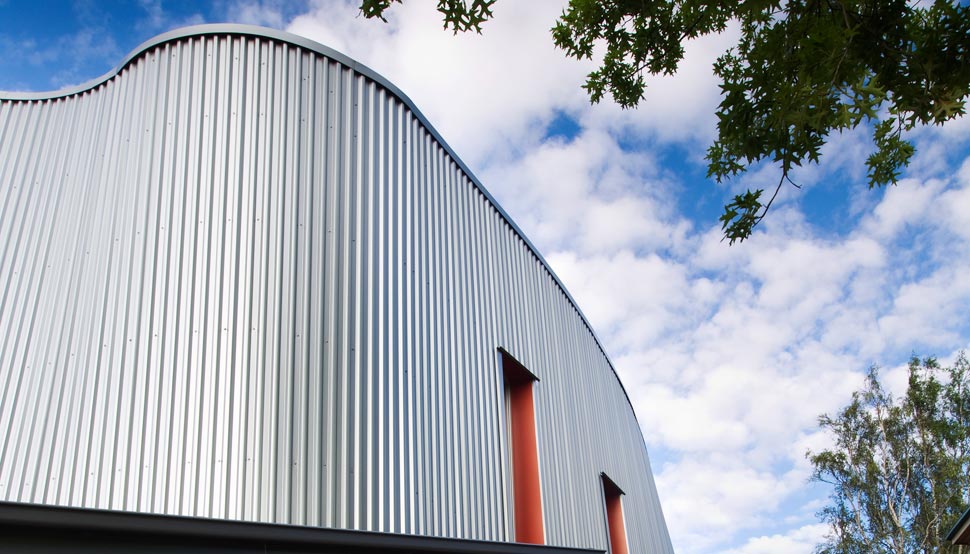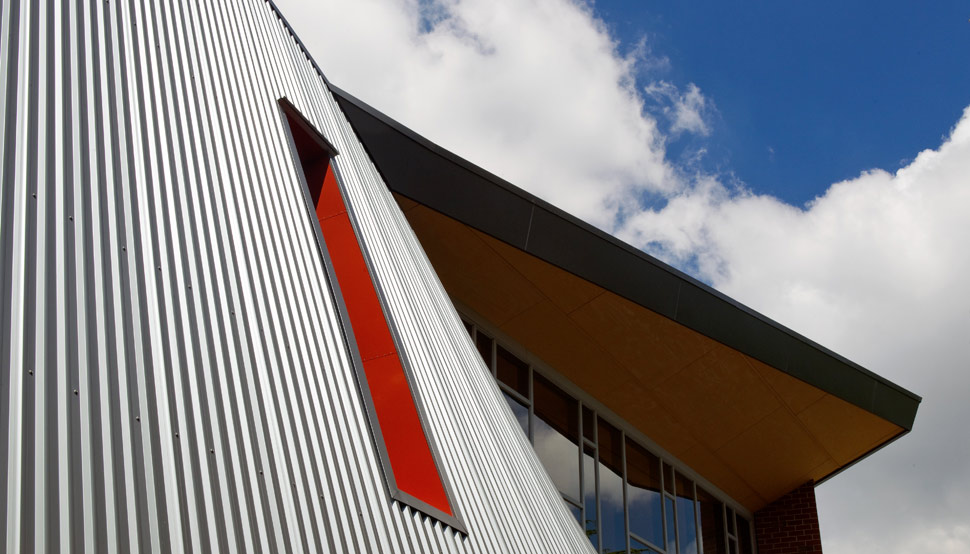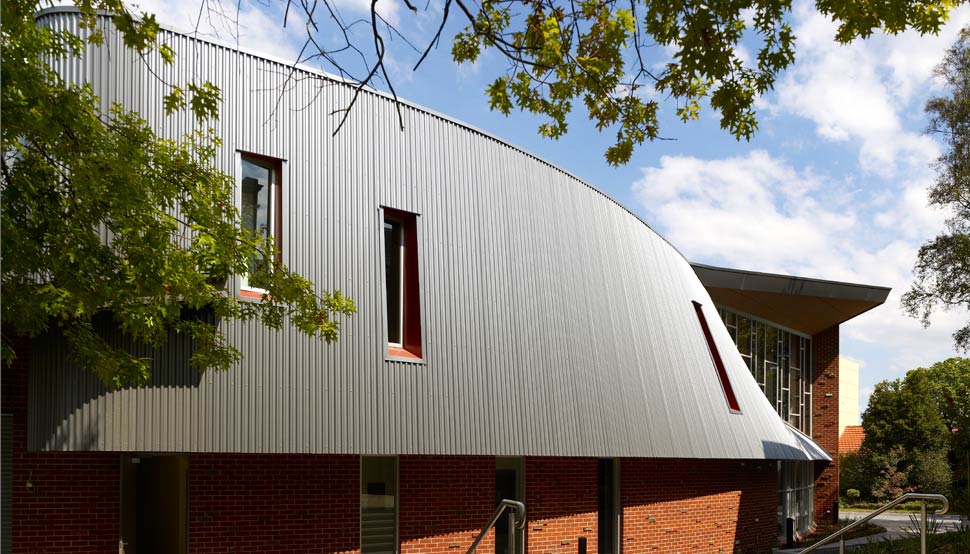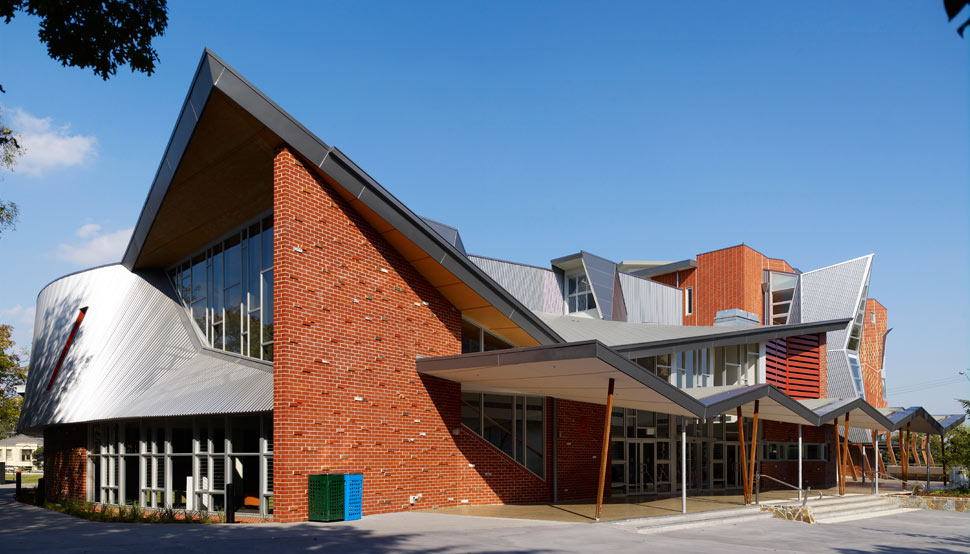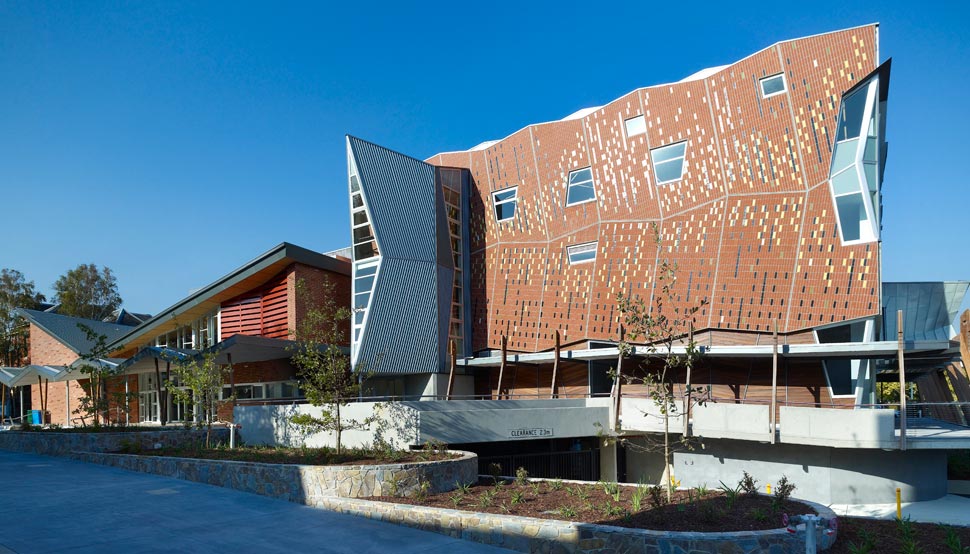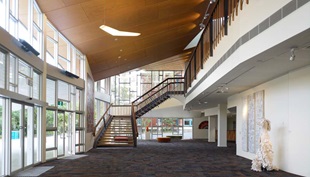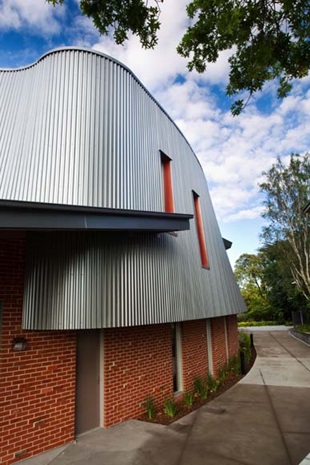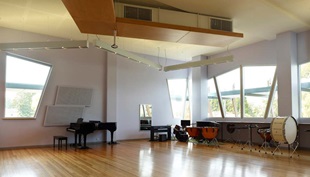Carey Grammar School, Phil De Young Centre for Performing Arts
Gregory Burgess Architects has designed a vibrant building with twisting planes and the power to simultaneously shock and enchant its audience.
Credentials:
Client: Carey Baptist Grammar SchoolLocation: Kew, Victoria
Architect: Gregory Burgess Architects
Project Manager: Coffey Projects
Builder: APM Group
Steel Fabricator: DVP Engineering
Shop Drawing Contractor: Straightline Drafting
Cladding Contractor: Signal & Hobbs
Landscape Architects: Formium Principal Steel Components
Building Size: 3600m2
The three-storey Phil De Young Centre for Performing Arts was recently completed at Carey’s Kew campus. This vibrant building, designed as a music hall, performance space and reception for the school, opened to much expectation and some controversy, ruffling the feathers of listeners on local talkback radio who felt its spectacular style wasn’t in keeping with private-school values.
Such reactions are perhaps to be expected, although they ignore the building’s intricate morphology, which conforms to Gregory Burgess Architects (GBA)’s long-established practice of engaging with place, tradition and community.
Different interpretations of the facade’s pattern are possible – dot painting, pointillism, musical notation – resulting in what Burgess says is “a public statement of Carey’s commitment to the arts, and of the school moving forward with creative purpose but also humour and mental stimulation”.
The building’s steel components also link past and present. The rear wall uses LYSAGHT SPANDEK® profile and flat sheet made from COLORBOND® Metallic steel in the colour Facade®. Project Architect James Stewart says: “In terms of our steel usage, this wall is the crème de la crème, because we actually twisted and curved the steel.
The corrugations of the SPANDEK® profile gave the material stretch and flex, and a subtle twist, and the finish of the Metallic range has much more reflection, more life.
“It’s beautiful how the reflected light gives variation in the steel’s surface. It’s the only material that could achieve that. Corrugated profile doesn’t have enough flex, but the SPANDEK® profile has elasticity in every way”.
Burgess is also proud of the wall: “You connect with the brick at the lower level, but your eye is then taken with the steel, linking to the tree canopy”. He points out the chiaroscuro effect of the material, noting its “ductility, movement and lustre in the light”. In sunlight, these unique qualities cast the administrative building and a large tree beside it into three-dimensional shadow. GBA fought hard to retain these objects during construction for that purpose.
Steel was also used for the structural framework, as, Burgess says, “it’s very efficient in terms of spanning and strength, but also has a certain elegance. The finesse of the steel in the staircases and balustrades works with the timber, bringing out the qualities of both”.
For the roofing, LYSAGHT KLIP-LOK® profile and SPANDEK® profile made from COLORBOND® steel in the colour Bushland® were used. Burgess was pleased with “the elusive, dematerialising quality of the finish, which provides a communication with everything around it, including people. The SPANDEK® profile is very legible, and good value for money”. The latter was important, given the tight budget: “We convinced the client on that, instead of going with zinc, which is more expensive. In the end, the steel is more appropriate and looks better, responding to existing colours on site, including the sky and the quality of light”.
Roland Yeung, Carey’s Director of Music, is full of praise for the auditorium, designed to hold 325 people and a symphony orchestra: “It has fabulous acoustics that aren’t brittle, but alive, roomy. You don’t need a microphone – you can speak normally and be heard throughout”.
His testimony speaks volumes. When asked about the consensus of students and staff, he concludes: “We just like the way the building sits”.

